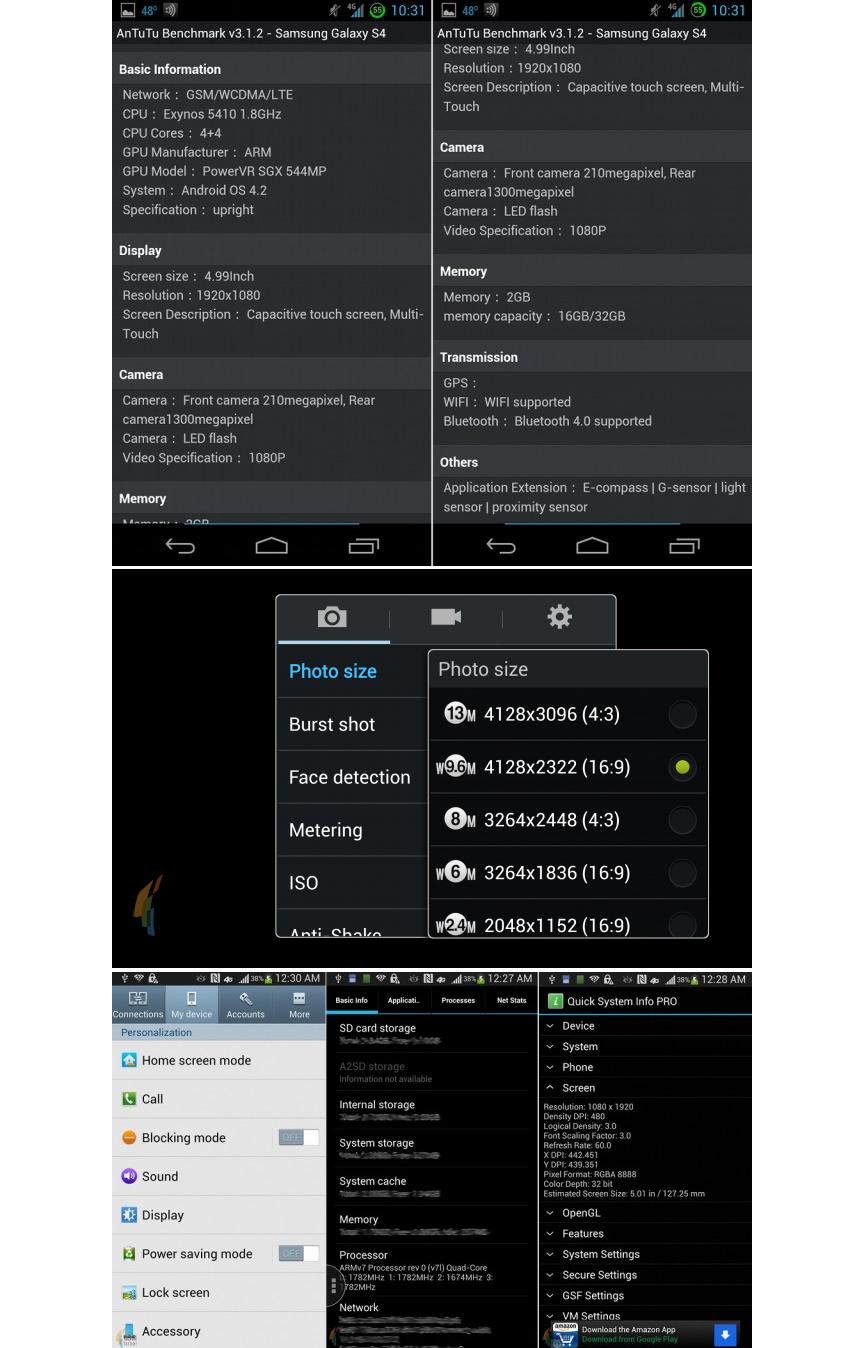
Previously TQ reported that the leaked results of a Antutu benchmark test revealed some significant features of Samsung’s upcoming flagship smartphone, the Galaxy S IV. According to that report, the Galaxy S IV will boast the Samsung’s homemade chip known as Octa Exynos which is a 1.8GHz processor. In addition to this, the Antutu benchmark results also unveiled the details of S IV’s front and rear cameras, RAM and internal storage capacity. Now another group of leaked images of Galaxy S IV’s Antutu benchmark test results have appeared online, which have further added authentication to our previous report. A majority of the features these newly leaked images have exposed were no different than the ones shown in the previous images. But the latest leaked images are clearer than the previous ones, as it can be clearly seen in the image that the Galaxy S IV packs a quad-core Exynos 5410 chipset together with the 1.8Ghz processor. Furthermore, the display measurement and resolution (4.99-inch 1080p) of the upcoming smartphone were also similar to the previous report. Similarly it shows that the rear camera of S IV is of 13-megapixels, whereas front camera is of 2-megapixel. However, the new thing that we have learned from these recently leaked photos is that the back camera of the next Galaxy shoots at a ratio of 4:3. This indicates that Samsung has more likely used a CMOS sensor in the S IV camera that looks quite similar to the Sony Xperia Z sensor.
Moroever, it also appears that the North American edition of the Galaxy S IV will also sport an Exynos 5410 chipset. Earlier, reports indicated that Samsung might not introduce its homegrown Octa Exynos chipset in S IV, but now it is almost conformed that it will make its debut with the next Galaxy on March 14th. Apart from this the new images have also exposed the TouchWIZ colour scheme of S IV that comprises of grey and blue colours.
Most importantly it has been once again confirmed that Galaxy S IV will be a world phone, as the display in the leaked image is showing all three types of networks, GSM/WCDMA/LTE. This means that now Samsung will not need to launch different editions of its forthcoming Galaxy S series phone like its predecessors because it seems to have the capability of working with all networks.
Source: MobileSyrup
Photo: MobileSyrup